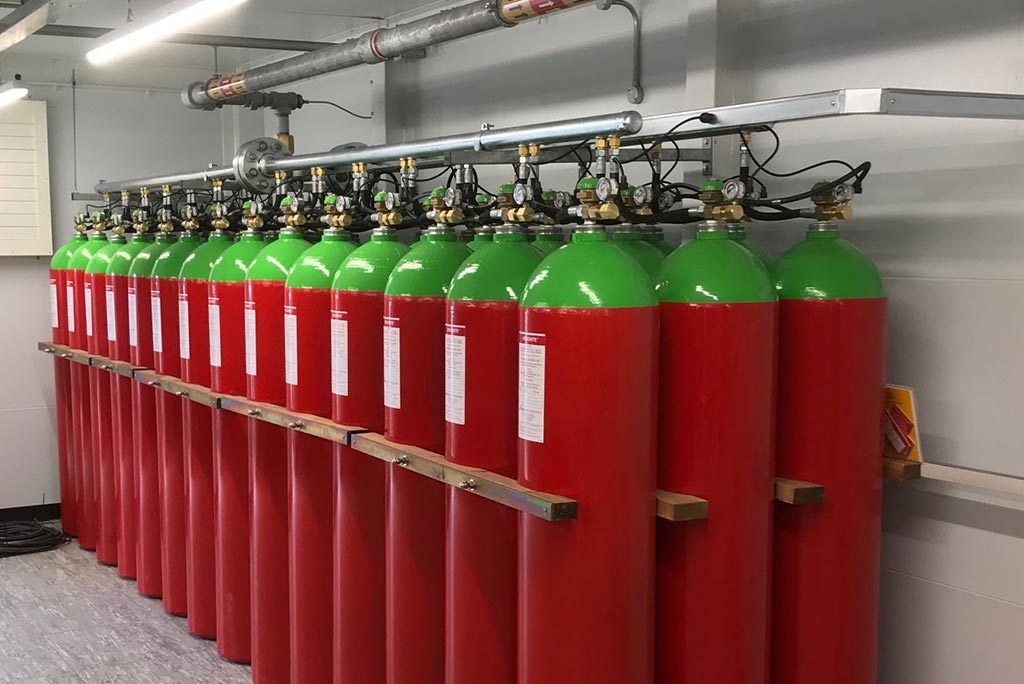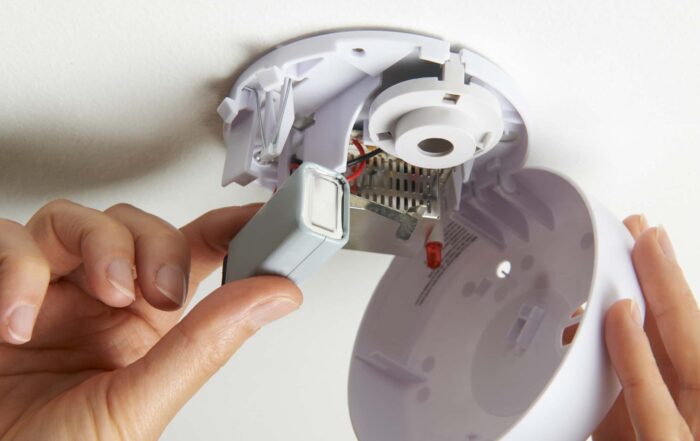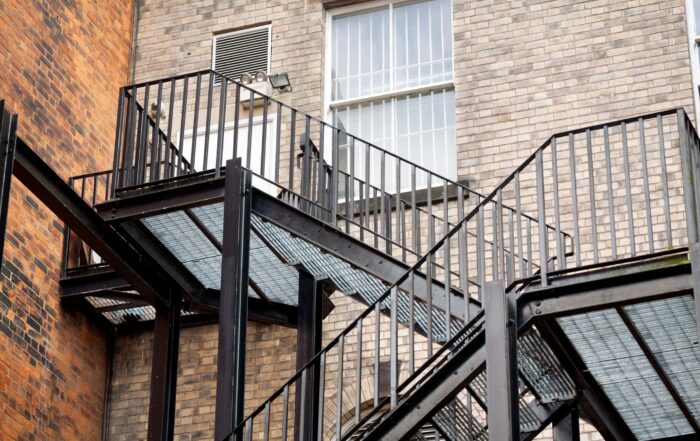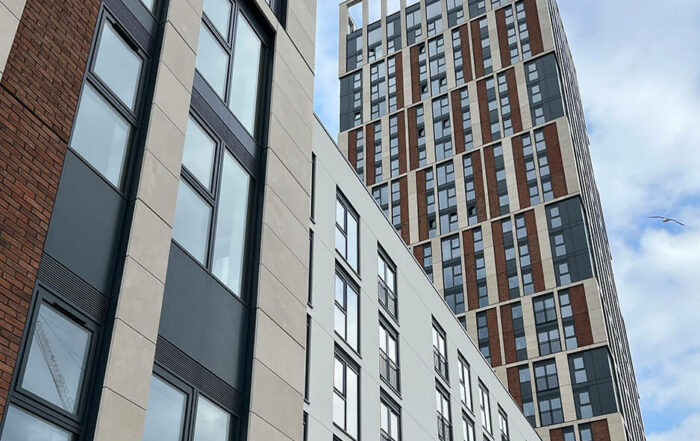Gas Suppression System to Protect Critical Infrastructure/IT Systems
One of the biggest concerns for a business is security; ensuring assets are protected from theft or tampering. However, fire safety should not be overlooked and can be critical in preventing damage, protecting irreplaceable data, and keeping employees safe.
In the event of a fire, traditional systems may suffice, but in data centres, server rooms, computer suites and so on, water cannot be used. Mixing water with fire, especially an electrical one, can have harmful effects on IT systems and critical infrastructure. To combat this, alternative and more effective fire suppression systems are used – gas.
How Does a Gas Suppression System Work?
As the name suggests, Gas Suppression Systems use gas to suppress fires, critical in situations where water cannot be used. Where live electricity is present, adding water can present serious risk of electrocution as well as damage to electronics.
Similar to a traditional water sprinkler system, the system is activated by the triggering of a smoke detector. Most modern detector systems use a ‘double-knock’ method whereby smoke must be detected by two different devices to verify its presence and prevent false alarms.
Once activated by smoke detectors, the Gas Suppression System releases a gaseous agent into the room and works to stop the fire by taking away elements it needs to continue. After a certain time of gas retention, in which the room is closed off to allow the system to fully extinguish fire, the fire should be suppressed and damage minimal.
There are two main Gas Suppression Systems – Inert Gas and Chemical Agent – which extinguish fire by disrupting the fire triangle in different ways.
The Fire Triangle
Fire needs three components to successfully spread or maintain; heat, air (usually oxygen), and fuel.
If an element is removed, the fire cannot be sustained. An example of this is when a fire is covered by a fire blanket, which removes Oxygen and extinguishes the fire.
Inert Gas Suppression Systems work by reducing Oxygen and Chemical Agent Suppression Systems work by cooling the fire – both disrupting vital elements of the fire triangle.
Inert Gas Suppression Systems
This system for fire suppression uses various blends of inert gases (naturally occurring gases) to reduce the oxygen level in a room to prevent combustion from continuing. Regular oxygen levels in the air are approximately 21%, however adding additional inert gases such as nitrogen and argon reduce the oxygen level to below 15%; a level at which fire cannot be sustained.
Although oxygen levels in a room are reduced, Inert Gas Suppression Systems are carefully designed to keep the oxygen level at a safe and breathable amount for humans (>12%).
This system works fast to suppress fire and is effective in larger rooms. A consideration is large space requirements for gas cylinder storage.
Chemical Agent Systems
Chemical Agent Suppression Systems release chemical agents that help to remove heat from the fire triangle. These agents are stored as liquid and pressurised by nitrogen.
The liquid chemicals (safe for humans, electronics and the environment) mix with the air and therefore increase the heat capacity of the air. As the air now has bolstered heat capacity, through absorbing the heat energy, the fire triangle is disrupted, and the fire suppressed.
Chemical Agent Suppression Systems work extremely fast to combat fire and are especially cost effective in smaller rooms. Additionally, as there is low concentration use, there is less of a demand on storage space.
Benefits of Gas Suppression Systems
Gas Suppression Systems provide comprehensive fire safety through extinguishing fires in ways that are safe to humans and not damaging to equipment.
Main benefits are:
- No damage to electronics – This is especially key for IT systems and critical infrastructure holding irreplaceable data. Additionally, downtime is decreased with Gas Suppression Systems as the clean-up is swift, allowing for mostly undisrupted business as usual.
- Non-conductive – Gas doesn’t conduct electricity, unlike water, and is therefore safer when suppressing electrical fires.
- Fast – Gas Suppression Systems work fast to extinguish fires, helping to protect infrastructure and prevent smoke damage that can occur over the duration of a fire.
- Safe for humans – Modern systems are carefully designed to be safe for humans meaning processes of evacuation or return to room are simplified.
- Environmentally considered – As the inert gases (i.e. nitrogen and Argon) are found naturally in the atmosphere, they are not damaging to the ozone layers or harmful for the environment.
See more: Benefits of Gas Fire Suppression Systems.
Gas Suppression System Requirements
All Gas Suppression Systems must be designed and tested in accordance to British Standards, ensuring safety and reliability.
Room Integrity Testing
A Room Integrity Test, a required prerequisite to Gas Suppression System installation, checks whether a room can hold gas for a set period of time; typically 10 minutes is a minimum retention time. Any unsealed areas or small holes may lead to gas escaping the room, indicating a Gas Suppression System may be ineffective without improvements being made.
The test causes minimal disruption and must be performed annually. A test is also advised after any changes to the room, i.e. minor building work or even drilling, which may affect retention time.
British Standards for Room Integrity Testing include BS EN 15004.
Cylinder Hydrostatic Testing
According to regulations (Pressure Equipment Regulations 1999), compressed gas cylinders must be tested every 10 years. By passing a hydrostatic test and being recertified, a cylinder is approved as fit for purpose and safe.
Hydrostatic Testing must be performed by someone accredited to EN ISO 17020.
Learn More with Sovereign Fire and Security
If you are looking to comprehensively secure your business, from intruders and fire, get in touch with Sovereign Fire and Security today. We have decades of experience in providing successful solutions for commercial, residential, and private clients, understanding the unique requirements each situation brings.
From intruder alarms and access controls, to Gas Suppression Systems and Covid-19 response technology, we have a fire and security solution to fit your needs.
Recent Articles
Innovations and Regulations for Smoke Detection and Fire Alarms
Making sure your fire safety systems are up to standards saves lives, protects your building, and ensures you’re compliant with government regulations. However, with so many types of alarm systems [...]
Fire and Security – The Complete Guide to Fire Escape Regulations in the UK
Fire risks are real, with 622,173 incidents attended by Fire and Rescue Services in England for the year ending March 2023. Many things can keep you safe from fires. But [...]
Fire Safety for Mixed-Use Buildings
Ensuring you have up to date fire safety systems for your mixed-use building isn’t just a good way to keep your residents and structure safe and secure – it is a legal requirement. [...]




